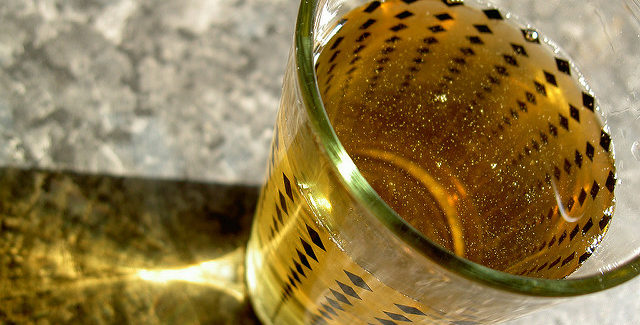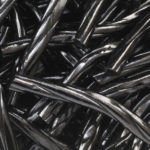
Arsenic in Your Apple Juice? Expert weighs in
Following up on Dr. Oz’s research finding arsenic in apple juice, Connie Diekman, RD, says she’s not worried about the juice we have at home in our cupboards, but she would like to see more research and education about how juice should more appropriately fit into a healthful eating plan.
As we exit a holiday filled with positive stories and reasons to give thanks, we find one causing much concern — and reasonably so. As reported by several online sources, television shows, videos and bloggers, there are, once again, questions about arsenic in juice.
Originally reported in September 2011 by Dr. Oz, a study he commissioned showed arsenic in apple and grape juices below the FDA-approved level of 23 parts per billion, but higher than the approved level of 10 parts per billion allowed in water. His study was called “irresponsible” by many, but a new study, conducted by Consumer Reports, mirrors his findings and is causing FDA to reassess whether the acceptable levels of arsenic in juices need to be adjusted, even though the consumption of juice does not match the levels of consumption for water.
Why is there arsenic in juice in the first place?
Connie Diekman, RD:
Arsenic is in juice for a variety of reasons. Residual from the soil when fertilizers and pesticides contained it, water that is used on the trees or in processing and some can be from packaging. The real concern is if the type is organic or inorganic.
With the way processors are able to can or freeze food, why do they have to add this additive to it? Our parents and grandparents and their parents didn’t and we were a lot healthier then than now… so why add it to our food?
It is not added intentionally most of the time. And a point of clarification: in fact, the levels used to be much higher than they are now due to the use of fertilizers and pesticides that were arsenic-based.
The FDA said the initial study didn’t differentiate between inorganic or organic arsenic. Does this matter?
Yes, this is the key issue — at least as we know now. Inorganic arsenic is the form that is known to be associated with increased cancer risk; organic arsenic has not been shown to increase risks.
Dr. Randy Worobo at the Cornell University Department of Food and Science said that the amount of tests conducted was not statistically significant. Is this consistent with your understanding of the research?
This is definitely an evolving issue. We have some studies and they are the basis for this growing concern. However, we need either more consistent studies or a very good large-scale study to provide more evidence to define risk, appropriate levels and further assessment of organic arsenic and its impacts.
The drinking water standards for arsenic (10 parts per billion) are based on a person weighing 70 kilograms (about 155 pounds) who drinks two liters (about 8.5 cups) of water a day. The concern of Consumer Reports is based on the long-term risks of getting cancer. Based on your understanding, is this a legitimate concern?
The inorganic arsenic is a risk for cancer and the concern with this current number is that children don’t weigh 155 pounds.
A representative from Consumer Reports said that 23 parts per billion (arsenic in juice) is much too high. Based on your understanding, is this a fair statement?
EPA has set a lower level for water (10 parts per billion) and they have used this figure as the reference for why the amount in juice is not an issue. IF the amount of arsenic is in fact as high as 23 parts per billion, it is too much.
One commenter online said, “This article could just as easily have been titled, ‘New study finds all juice in compliance with FDA requirements for arsenic.’ It is written in a way to get everyone worked up, and half the people here manage to make it a political issue.” It’s an interesting comment, since the research compared arsenic levels in juice to standards for water. Is that a fair statement?
The important factor here is that we need to learn more about arsenic in juice, and in the interim we need to educate parents that fruit intake should mean eating fruit and limiting juice consumption.
Given that FDA is now considering revising the standards, should we all be concerned for the juice in our cupboards and refrigerators?
As a Registered Dietitian, I’m not worried about the juice we have at home, but I would like to see more research and more education about how juice should more appropriately fit into a healthful eating plan.
The American Academy of Pediatrics recommends diluting juice and limiting consumption of juices to four to six ounces for children under six years, and eight to 12 ounces for children older than six years. Our reader, Phyllis, asked, “How much of a concern should this be for teenagers or adults?”
The amount of juice consumed is the key. Children, and some adults, drink too much juice. Juice does not provide the fiber of fruit, which not only aids satiety, but also controls the quantity of fruit consumed. Juice also seems to contribute to tooth decay, especially in young children. Switching children to apples and grapes would be an excellent way to improve nutrition and reduce intake of the sugar in juice, and possibly arsenic.
The image “Apple Juice” by stvcr is licensed under CC BY-SA 2.0.


























